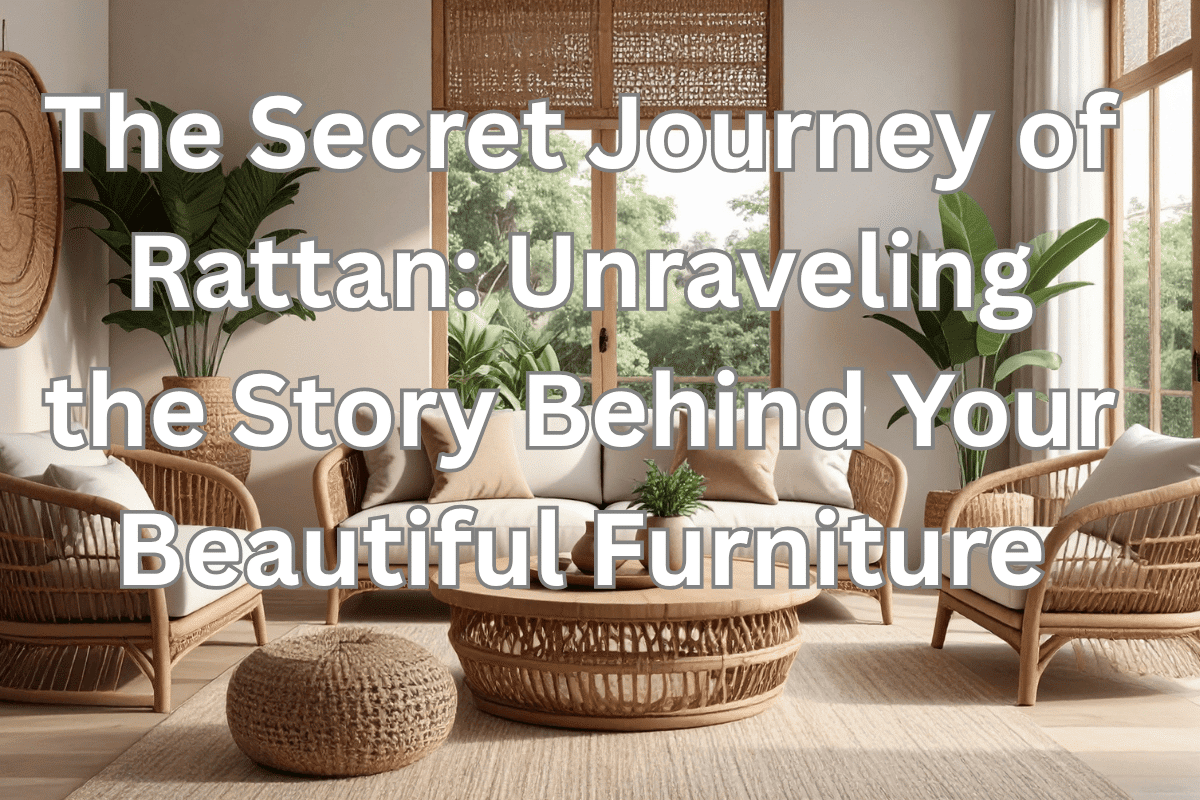Ever wondered about the secret journey your beautiful rattan furniture takes before it reaches your living room?
It’s more complex and ethically charged than you might imagine. Join us as we unravel the hidden story of rattan, exploring how sustainable practices are transforming this ancient industry.
Table of Contents
- The Allure of Rattan: More Than Just Furniture
- The Hidden Journey: Unpacking Rattan’s Origins
- Ethical Crossroads: The Challenges of Sourcing
- Pioneers of Progress: Shifting Towards Sustainability
- Your Impact: Making Conscious Choices
- Deep Dive Podcast
- Related Content
The Allure of Rattan: More Than Just Furniture
Rattan has long captivated homeowners and designers alike with its natural aesthetic and versatility. From elegant chairs and stylish tables to intricate baskets and decorative accents, rattan pieces add warmth and texture to any space. Its lightweight nature and durability make it a popular choice for both indoor and outdoor furniture, seamlessly blending with various decor styles—from bohemian to modern minimalist.
Beyond its beauty, rattan is often perceived as an eco-friendly material. Many consumers are drawn to it for its sustainable qualities, believing that it is a responsible choice for their homes.
However, the allure of rattan comes with a hidden story that goes beyond its appealing appearance. As we delve deeper into the journey of rattan, we’ll uncover the complexities surrounding its production and the ethical considerations that come into play.
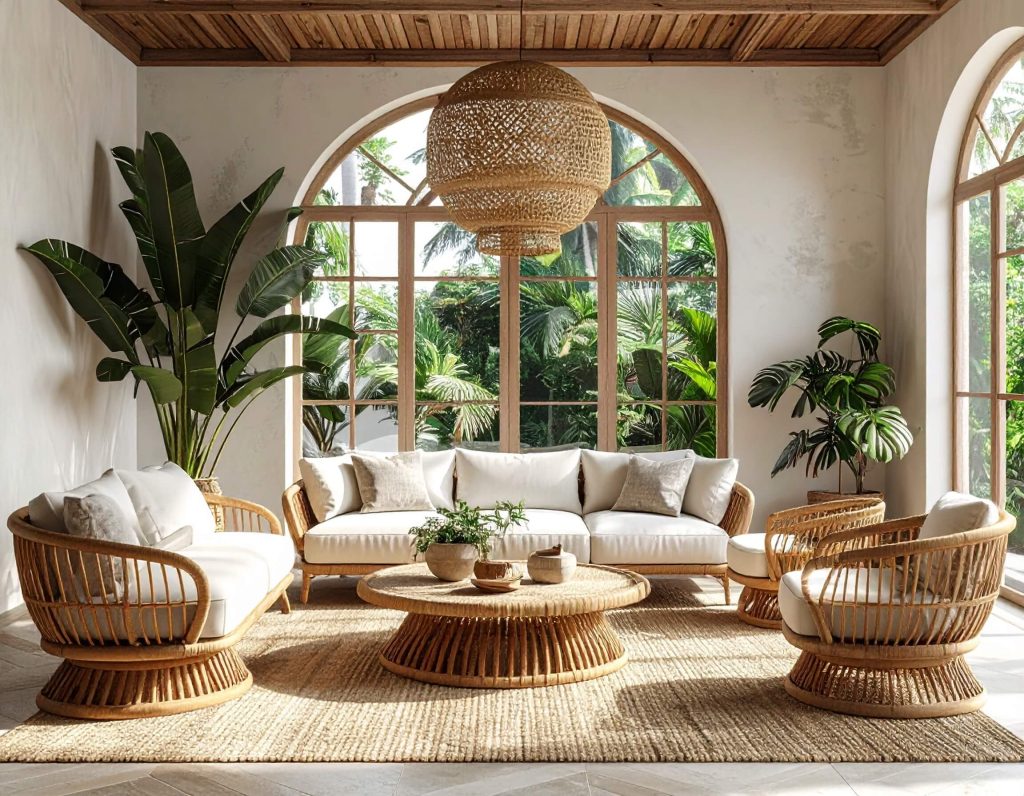
The Hidden Journey: Unpacking Rattan’s Origins
Rattan is not just any material; it is a vine-like palm that primarily grows in tropical rainforests, particularly in Southeast Asia. Countries like Indonesia, Malaysia, and the Philippines are rich in rattan species, making them key players in the global rattan market.
The process of harvesting rattan is traditionally done by hand, with local communities relying on this practice for their livelihoods.
Harvesters carefully cut the rattan vines from the forest, ensuring that they do not damage the surrounding ecosystem.
This traditional method, passed down through generations, reflects a deep understanding of the forest and its resources. However, the increasing demand for rattan furniture has led to some concerning practices.
While rattan can be harvested sustainably, the potential dark side of the industry cannot be ignored. Issues such as deforestation, exploitation, and illegal logging have emerged, threatening the very forests that provide this beautiful material. As we explore the journey of rattan, it becomes clear that the path from forest to furniture is fraught with challenges.
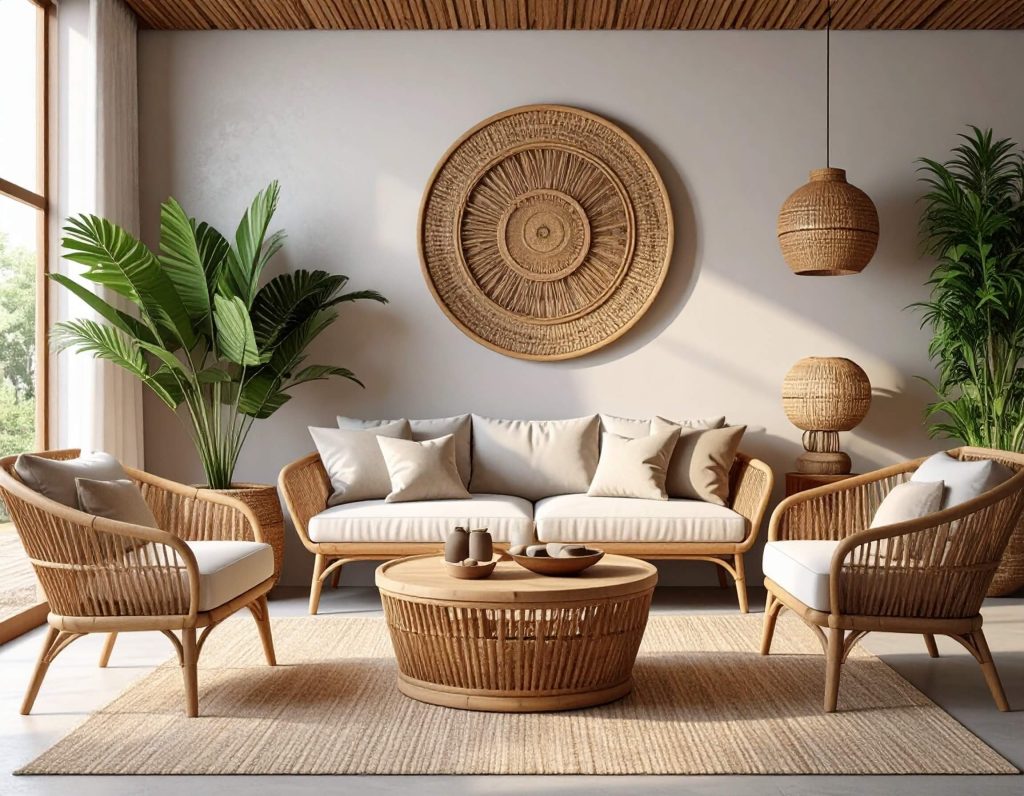
Ethical Crossroads: The Challenges of Sourcing
The environmental impact of rattan harvesting can be significant. Unsustainable practices lead to habitat loss, soil erosion, and contribute to climate change. The demand for rattan has intensified, putting pressure on forests and the delicate ecosystems they support. Additionally, the rapid expansion of rattan plantations often comes at the expense of biodiversity, as native flora and fauna are displaced.
Social issues also plague the rattan industry. Many harvesters work under unfair labor conditions, receiving low wages for their hard work. Dangerous working environments, coupled with a lack of proper safety measures, further exacerbate the plight of these individuals. The pressure from global markets for cheaper rattan products has led to exploitative practices that prioritize profit over people and the planet.
As consumers, it is essential to recognize the impact of our choices on this complex web of challenges. Understanding the ethical crossroads of sourcing rattan can empower us to make informed decisions that support sustainable practices.
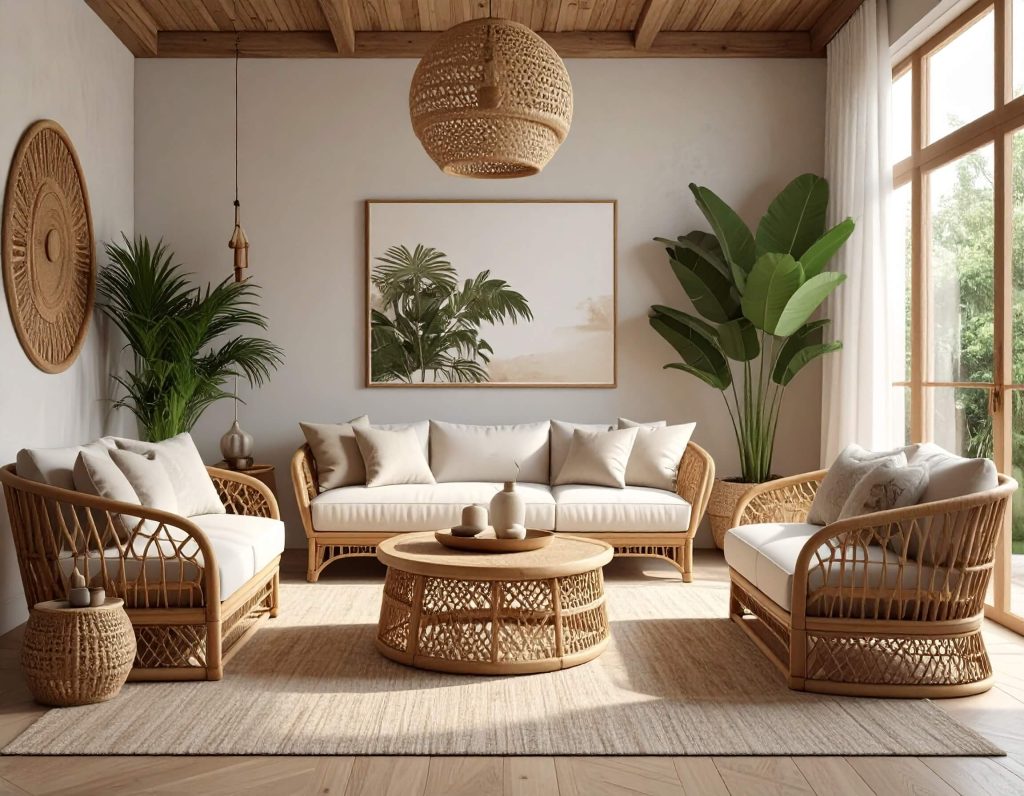
Mondoro’s Commitment to Sustainable Practices in Rattan
At Mondoro, we believe in being responsible citizens of the world, and this commitment extends to our production processes. When sourcing materials like rattan, we ensure that they are ethically sourced and sustainably harvested.
Our dedication to sustainability not only supports the environment but also promotes the well-being of communities involved in the production. By prioritizing ethical practices, we aim to create a positive impact wherever we operate.
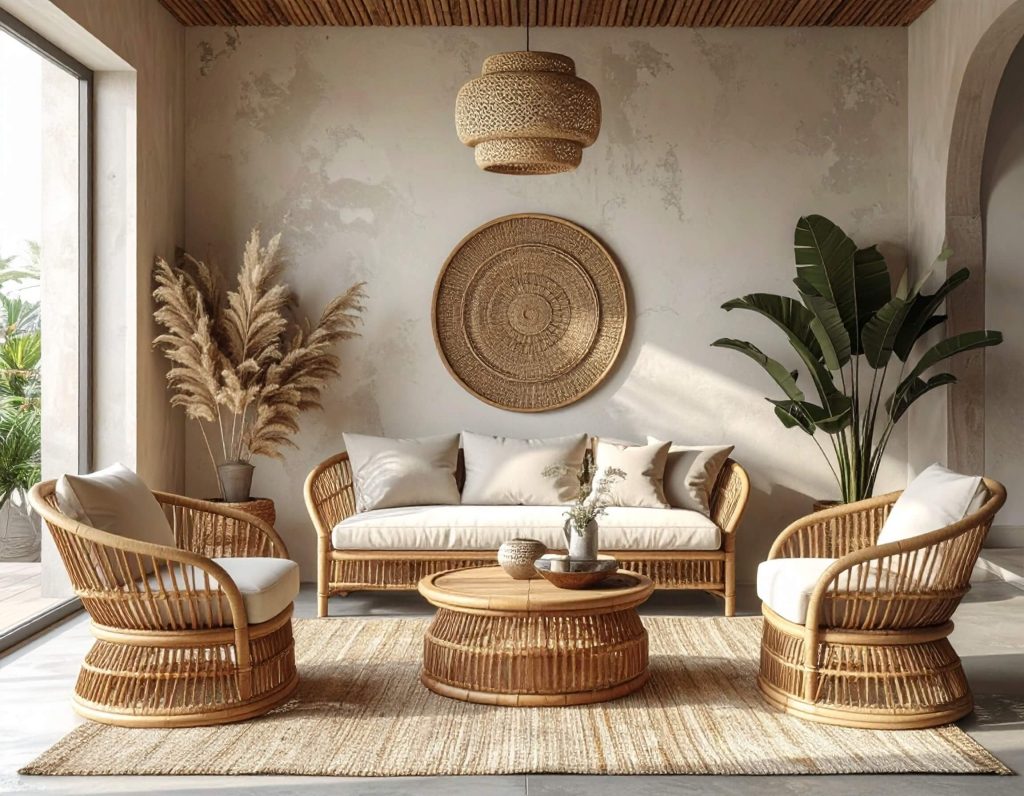
Pioneers of Progress: Shifting Towards Sustainability
Despite the challenges, there is hope on the horizon. Many companies and initiatives are actively promoting sustainable rattan harvesting practices. These pioneers of progress are committed to ensuring that the rattan industry evolves in a way that respects both the environment and the communities involved.
Innovative techniques for reforestation and responsible forest management are being implemented to counteract the negative impacts of rattan harvesting. For instance, some organizations are working to restore degraded areas of rainforest, allowing rattan to thrive naturally while providing habitat for wildlife.
Fair trade certifications are also playing a crucial role in ensuring ethical treatment of workers and communities.
By supporting brands that prioritize fair wages and safe working conditions, consumers can help drive positive change within the rattan industry. These certifications provide transparency, allowing shoppers to make choices that align with their values.

Your Impact: Making Conscious Choices
As consumers, we hold the power to influence the rattan industry through our purchasing decisions. Here are some actionable tips for identifying ethically sourced rattan products:
- Research Brands: Look for companies that prioritize sustainability and ethical sourcing in their production processes. Check their websites for information about their practices and certifications.
- Ask Questions: Don’t hesitate to reach out to brands and ask about their sourcing practices. A reputable company should be transparent and willing to share information about their supply chain.
- Educate Others: Share your knowledge about the rattan industry and the importance of ethical sourcing with friends and family. The more people are aware, the greater the demand for responsible practices.
By making conscious choices, we can collectively drive positive change within the rattan industry. Supporting sustainable practices not only helps protect the environment but also uplifts the communities that rely on rattan harvesting for their livelihoods.
The journey of rattan from the forest to your living room is a story filled with beauty, complexity, and ethical considerations. While rattan furniture adds charm to our homes, it is essential to recognize the hidden story behind this beloved material. By understanding the challenges of sourcing rattan and supporting sustainable practices, we can contribute to a more ethical and environmentally friendly industry.
As we continue to appreciate the allure of rattan, let us also embrace our role as informed consumers. Together, we can ensure that the journey of rattan is not only beautiful but also responsible, paving the way for a sustainable future for this remarkable material and the communities that depend on it.
Deep Dive Podcast
Join us on our Deep Dive Podcast.
Find out more about how Mondoro can help you create, develop, and manufacture excellent home decor and furniture products – don’t hesitate to contact me, Anita. Check out my email by clicking here or become a part of our community and join our newsletter by clicking here.
Mondoro gives out a FREE Lookbook to anyone interested. You can receive a copy of our latest Lookbook by clicking here.
Listen to our Podcast called Global Trade Gal. You can find it on all major podcast platforms. Try out to listen to one of our podcasts by clicking here.
Subscribe to our Mondoro Company Limited YouTube Channel filled with great videos and information by clicking here.
Related Content
How to Manufacture Vietnamese Lacquerware? An Insider’s Guide To Lacquer
Vietnamese lacquer requires many manufacturing steps in the lacquer production process, including making the base, preparing the lacquer base to be applied, and finally, applying the lacquer paint onto the surface. Every piece must be carefully sanded to give it a very smooth surface. Vietnamese lacquerware production requires a lot of skill and knowledge.
You can discover more by reading How to Manufacture Vietnamese Lacquerware? An Insider’s Guide To Lacquer by clicking here.
10 Great Vietnamese Home Décor Product Finishes and Techniques We Love
We love many techniques, materials, and finishes in Vietnam, but some of our favorites are Vietnamese lacquer, mother of pearl, eggshell, and faux paper finishes. We also do some unique woven rattan and linen techniques.
You can discover more by reading 10 Great Vietnamese Home Décor Product Finishes and Techniques We Love by clicking here.
Vietnam’s Top 10 Handicraft Villages Discovered
Today 10 Vietnamese handicraft villages are still manufacturing many of the same products they have produced for hundreds if not thousands of years. Some of these villages include Bat Trang Ceramic Village, Duyen Thai Lacquer Village, Quat Dong Embroidery Village, Van Phuc Silk Village, Kim Son Sea Grass Village, Ninh Binh Water Hyacinth Villages, Chuong My Rattan Village, Thuong Tinh Horn Village, Thanh Oai Conical Hat Village, and Xuan Lai Bamboo Village.
You can discover more by reading Vietnam’s Top 10 Handicraft Villages Discovered by clicking here.

